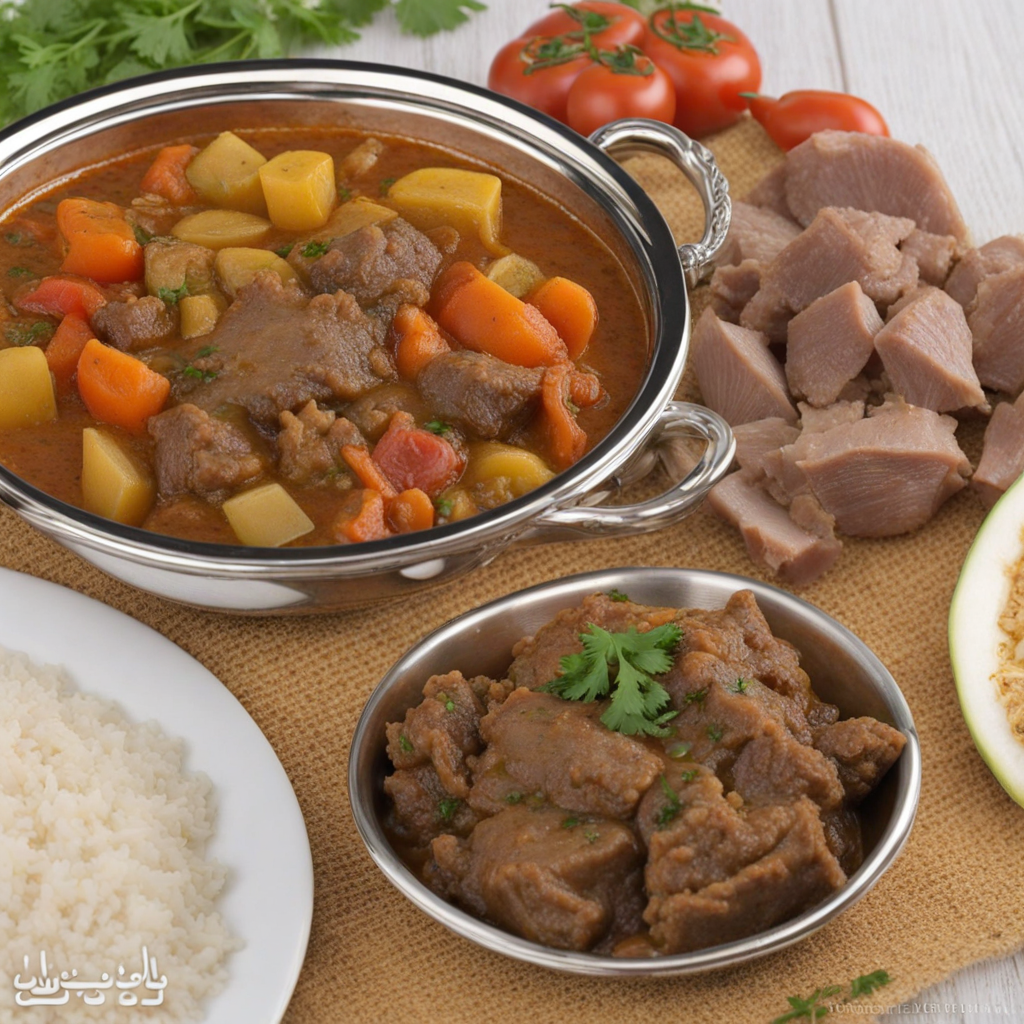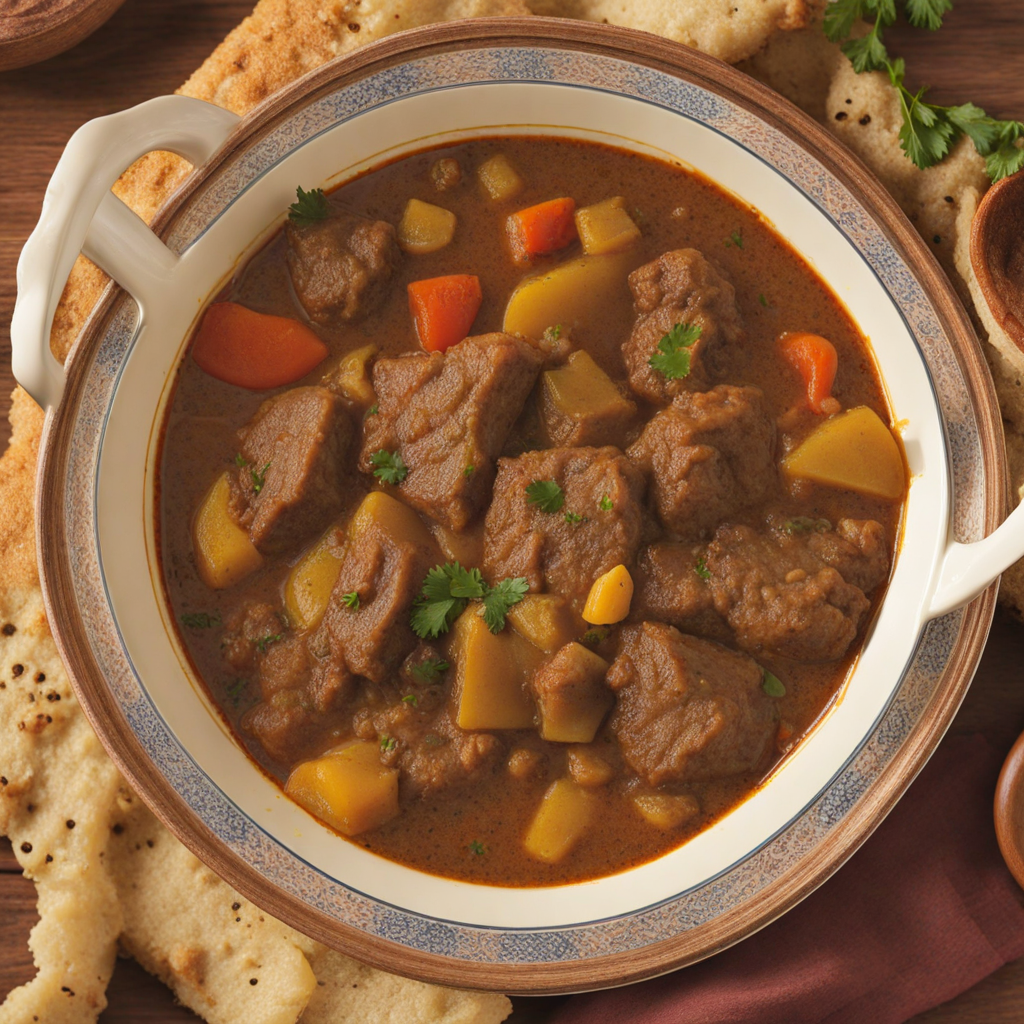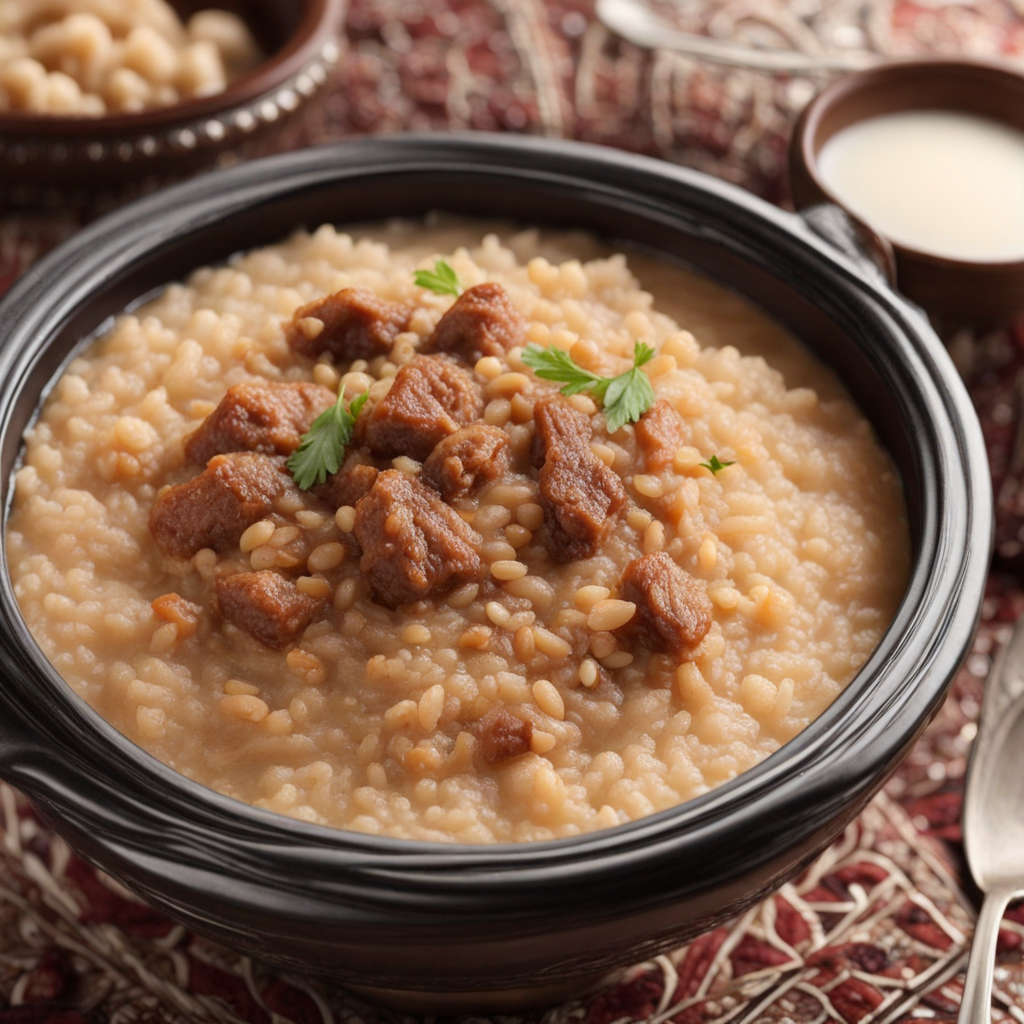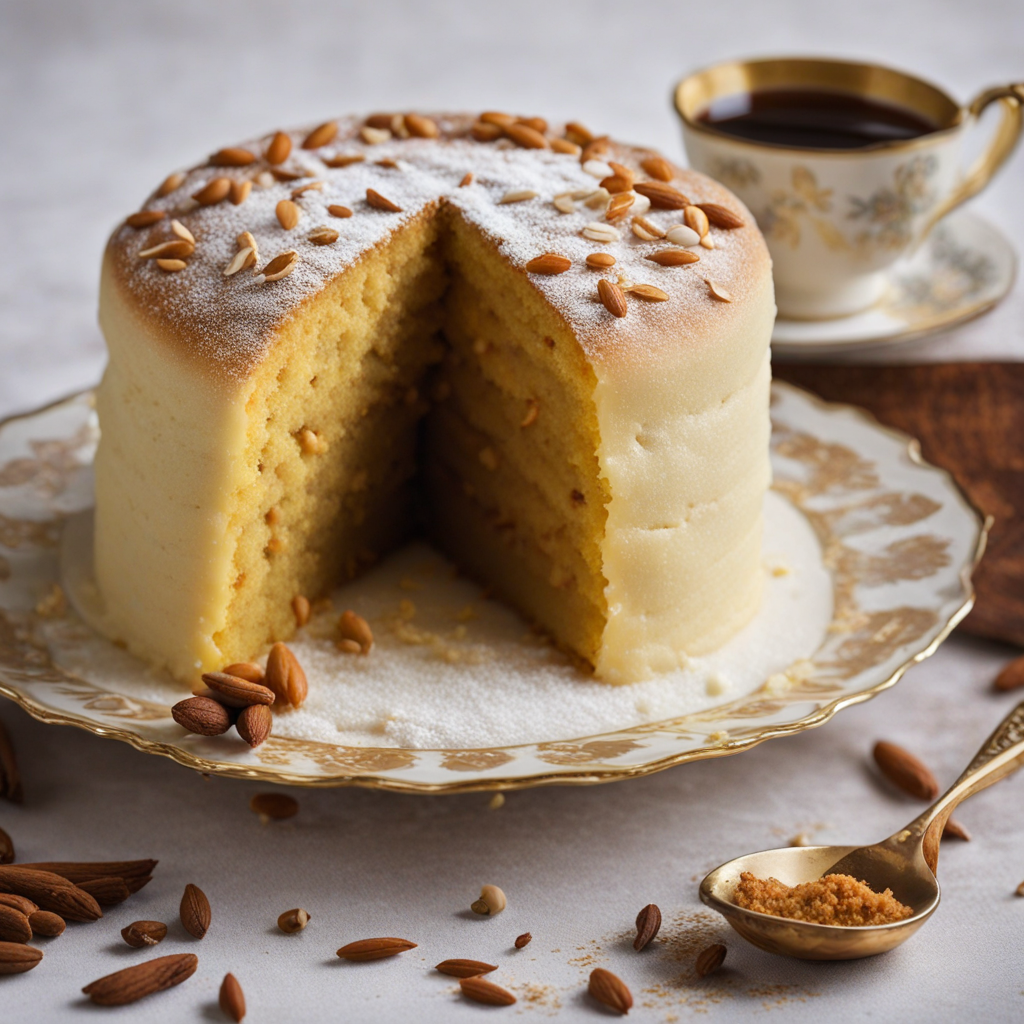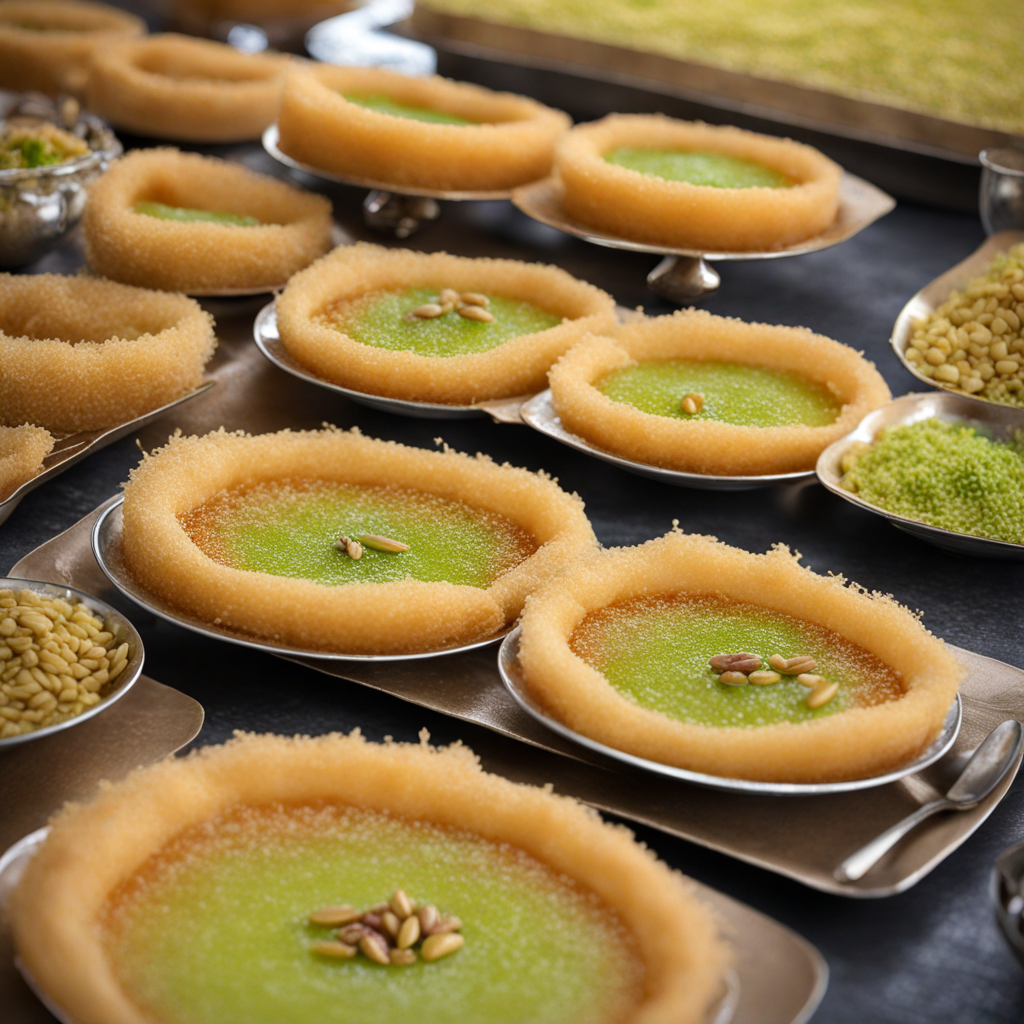Marag
Marag is a traditional Kuwaiti dish that embodies the rich culinary heritage of the region. This hearty stew is typically made with tender pieces of meat, often lamb or chicken, which are slow-cooked to perfection in a fragrant mix of spices and vegetables. The base usually includes a blend of onions, garlic, and tomatoes, simmered together to create a rich, flavorful broth that envelops the meat, allowing it to absorb all the aromatic spices. The inclusion of spices such as turmeric, cumin, and coriander adds depth and warmth, making each bite a delightful experience that transports you to the heart of Kuwait. The beauty of Marag lies not just in its flavor, but also in its versatility. While the classic recipe highlights meat, variations may incorporate an array of vegetables like carrots, potatoes, and bell peppers, making it a wholesome meal that caters to different tastes. The dish is often served alongside fragrant rice, which soaks up the delicious stew, making for a comforting and satisfying combination. This pairing not only enhances the flavors but also provides a fulfilling meal that can be enjoyed with family and friends, fostering a sense of community and togetherness. As you take a spoonful of Marag, you'll experience a symphony of flavors that are both warming and inviting. It’s a dish that reflects the rich history of Kuwaiti cuisine, showcasing local ingredients and traditional cooking methods that have been passed down through generations. Whether enjoyed during special occasions or as a comforting everyday meal, Marag is a delightful introduction to the world of Kuwaiti food, inviting you to savor its unique taste and embrace the culture it represents.
How It Became This Dish
Origin of مرق مرق, pronounced as "marq," is a traditional Kuwaiti dish that has deep roots in the culinary practices of the Arabian Peninsula. Its origins can be traced back to the Bedouin tribes, who thrived in the harsh desert environment. The necessity of cooking with available resources led to the creation of this dish, which primarily consists of meat, vegetables, and a rich broth. The Bedouins relied heavily on livestock, particularly sheep and goats, for sustenance, and these animals became central to many of their dishes, including مرق. In the early days, مرق was a simple stew made with whatever ingredients were on hand. The nomadic lifestyle of the Bedouins meant that meals had to be portable and easily prepared over an open flame. As Kuwait transitioned from a nomadic society to a more settled one, the dish evolved significantly. Ingredients became more varied and included spices and vegetables that were either cultivated or traded. The introduction of new culinary influences from neighboring regions, particularly Persia and the Indian subcontinent, also played a role in shaping the dish into what it is today. \n\n Cultural Significance مرق is more than just a meal; it holds cultural significance in Kuwaiti society. It is often served during special occasions, family gatherings, and communal celebrations. The dish symbolizes hospitality and generosity, reflecting the Kuwaiti ethos of welcoming guests with warmth and providing them with a hearty meal. It is common for families to prepare large pots of مرق to ensure that there is enough to share with friends and neighbors, reinforcing social bonds within the community. During Ramadan, the holy month of fasting, مرق takes on an even more significant role. It is often one of the first dishes served to break the fast, offering a comforting and nourishing option after a long day. The communal aspect of enjoying مرق during this time highlights the importance of family and togetherness in Kuwaiti culture. In many households, the preparation of مرق is a family affair, with each member contributing to the cooking process, thus passing down culinary traditions from one generation to the next. \n\n Ingredients and Variations The preparation of مرق can vary significantly depending on regional availability and personal taste. The base of the dish typically includes meat—such as lamb or chicken—alongside an array of vegetables like potatoes, carrots, and tomatoes. Spices such as cumin, coriander, and turmeric are used to enhance the flavor, creating a rich and aromatic broth. Another key element of مرق is the addition of rice, which is often served alongside the stew or cooked directly in it to absorb the flavors. In coastal areas, seafood may also be incorporated, reflecting Kuwait's maritime heritage. The versatility of مرق means that it can be adapted to suit various dietary preferences, making it a beloved dish across different demographics within Kuwait. \n\n Modern Adaptations As Kuwait has embraced modernization and globalization, the preparation and serving of مرق have also evolved. In contemporary times, many families still adhere to traditional recipes, but there is also a growing trend of experimentation with flavors and techniques. Chefs in upscale restaurants and hotels are putting their spin on مرق, incorporating international ingredients and innovative cooking methods while still honoring the essence of the dish. Food festivals and culinary events in Kuwait often feature مرق, showcasing its enduring popularity. These events serve as a platform for chefs to celebrate Kuwait's culinary heritage while introducing new generations to traditional dishes. Young Kuwaiti chefs are increasingly interested in preserving and promoting their culinary history, ensuring that مرق remains a staple of Kuwaiti identity in the face of globalization. \n\n Global Influence The international interest in Middle Eastern cuisine has led to the spread of dishes like مرق beyond Kuwait’s borders. With the rise of social media and food blogs, traditional recipes are gaining popularity among food enthusiasts worldwide. This has created an opportunity for cultures to share their culinary practices, allowing مرق to be recognized as a dish that embodies the rich flavors and traditions of the Gulf region. Additionally, Kuwaitis living abroad often prepare مرق as a way to connect with their homeland. It serves as a reminder of their cultural roots and familial ties, creating a sense of belonging even when far from home. In this way, مرق transcends its role as a mere dish and becomes a vessel for memories, emotions, and cultural identity. \n\n Conclusion and Future of مرق The future of مرق is promising as it continues to adapt to contemporary culinary trends while maintaining its traditional roots. As younger generations become more interested in their cultural heritage, the preparation of مرق is likely to remain a cherished family tradition. The ongoing exchange of culinary ideas and practices will further enrich the dish, allowing it to evolve without losing its essence. In conclusion, مرق stands as a testament to Kuwait's rich culinary heritage and cultural identity. It embodies the resilience and resourcefulness of the Kuwaiti people, reflecting their history and the values they hold dear. As a dish that is both comforting and communal, مرق will undoubtedly continue to be a beloved part of Kuwaiti cuisine for generations to come.
You may like
Discover local flavors from Kuwait


